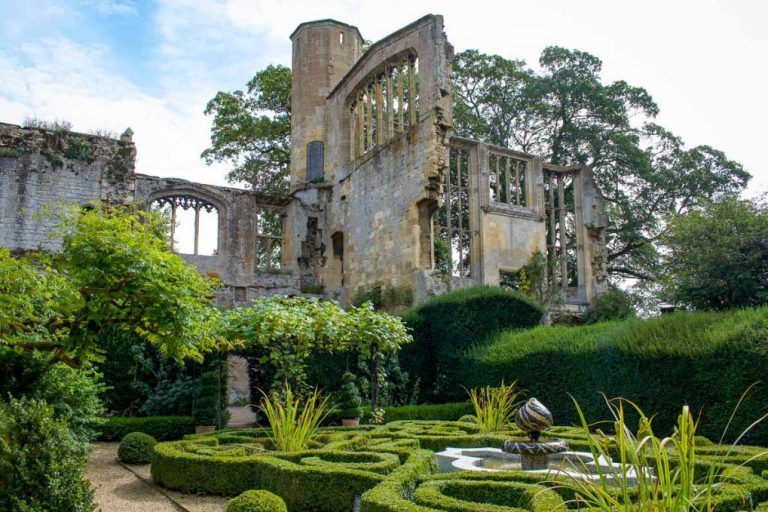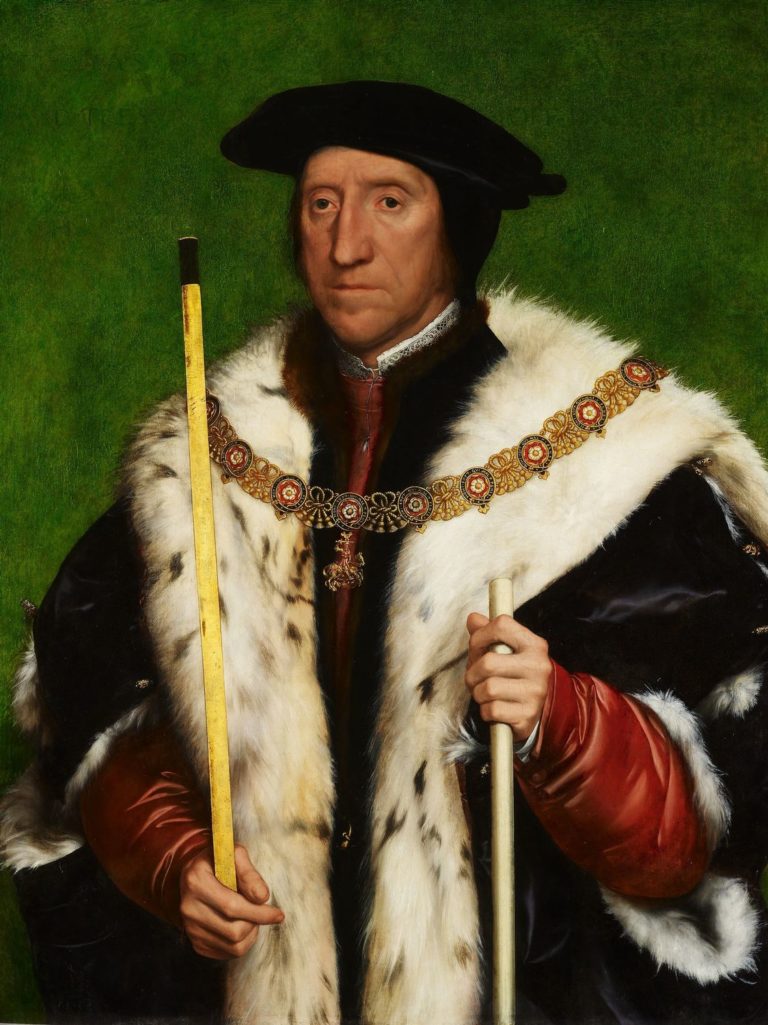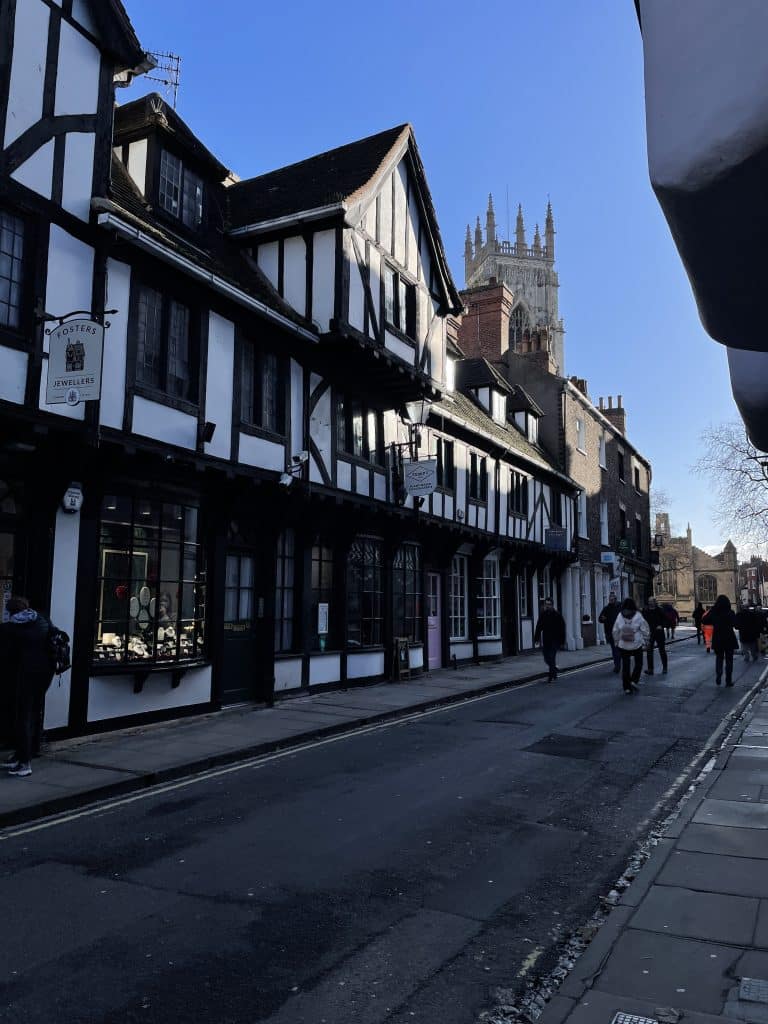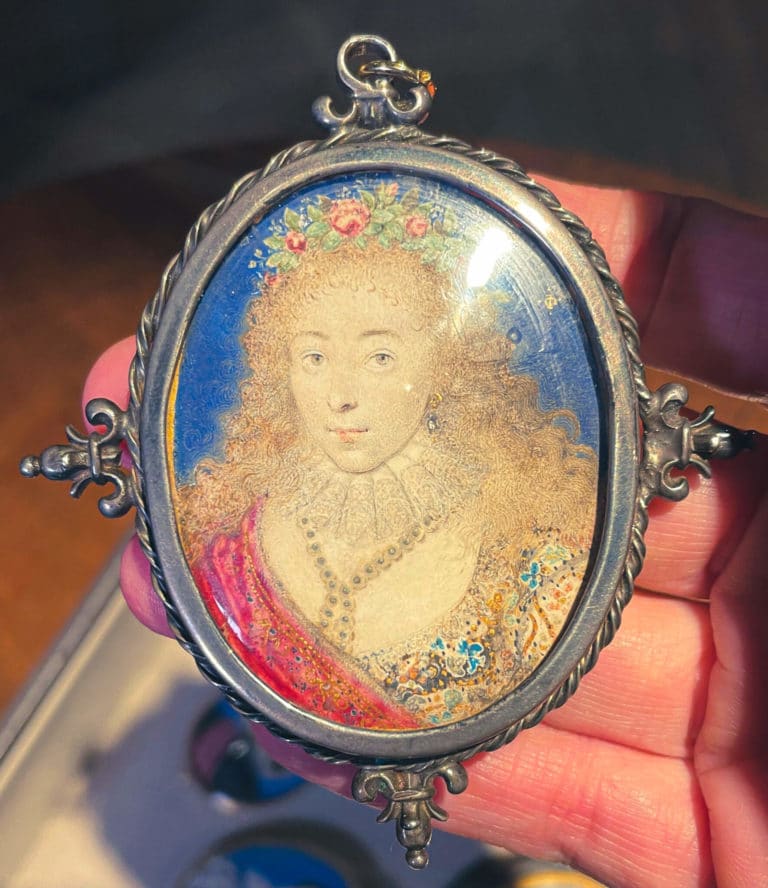Henry VII & Elizabeth of York
Henry VII:
Name and Titles: Henry Tudor, King of England and Lord of Ireland.
Born: 28 January 1457 at Pembroke Castle, Pembrokeshire.
Died: 21 April 1509 at Richmond Palace, London.
Buried: The Lady Chapel, Westminster Abbey, London.
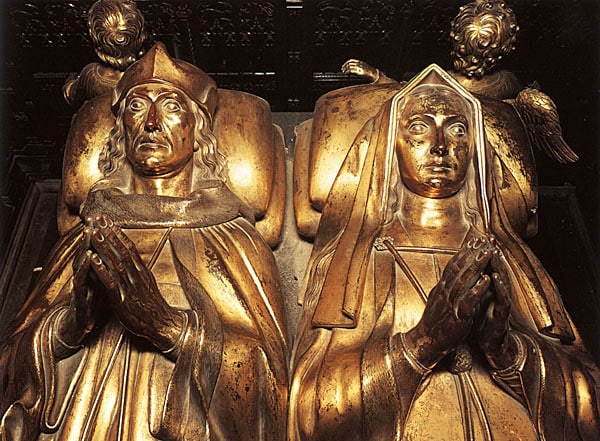
Henry Tudor was the only son of the Lancastrian heiress, Margaret Beaufort, and Edmund Tudor, half-brother of the Lancastrian King Henry VI. His father died three months before he was born. Thus, little Henry was initially raised by his uncle, Jasper Tudor, at Pembroke Castle in Wales.
Henry Tudor grew up during a turbulent time in English history. The Wars of the Roses saw the throne pass back and forth between Lancastrian and Yorkist claimants over a 30-year period. The fighting ultimately saw both Jasper and Henry, Tudor flee to Brittany, where they spent 14 years in exile.
After the death of Edward IV in 1483, his brother, Richard III, seized the throne from the boy-king Edward V, who mysteriously disappeared alongside his brother, Richard, Duke of York, in the Tower of London. Richard III’s reign was unpopular, and when Henry Tudor fought the Yorkist king at the Battle of Bosworth Field on 22 August 1485, many Yorkists turned-coat and fought for Henry. This may well have been on the latter’s promise to marry Elizabeth of York, Edward IV’s eldest daughter, should he become King of England.
After Henry Tudor’s victory, the King kept his promise, and the two were married on 18 January 1486 in Westminster Abbey.
During his early years, the stability of the new Tudor regime was far from certain. Two Yorkist pretenders, Perkin Warbeck and Lambert Simnel, were at various times advanced by Yorkist sympathisers as the ‘lost’ Duke of York and rightful heir to the throne. On 16th June 1487, Henry Tudor fought the Yorkist faction at the Battle of Stoke Field. There was a bloody rout of the Yorkist army, and historians see Henry Tudor’s victory as the final battle in the Wars of the Roses.
Although largely overlooked in favour of his more ‘glamorous’ descendants (his son, Henry VIII and his granddaughter, Elizabeth I), arguably, Henry Tudor was one of the most successful Tudor monarchs. From the outset, he wisely emulated the English traditions and trappings of monarchy, reinforcing his right to be King. He is credited with many administrative, economic and diplomatic initiatives and was a great patron of England’s wool industry, forging close ties to the country’s wealthy wool merchants (Do read my blog on Northleach as part of the 1502 progress for more information on this).
Henry and Elizabeth had seven children, three of whom died in infancy or shortly after birth. Henry reigned for nearly 24 years and was peacefully succeeded by his son, Henry VIII, in 1509. His two surviving daughters, Margaret and Mary, went on to become the Queens of Scotland and France, respectively.
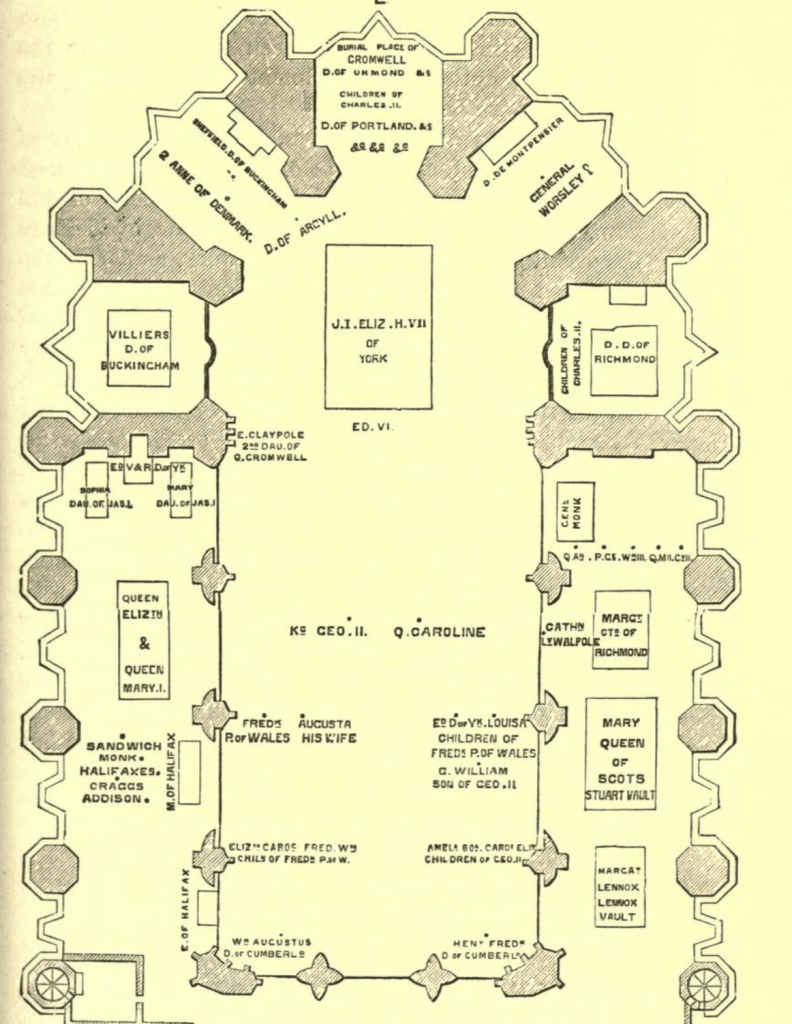
Elizabeth of York
Names and Titles: Queen Consort of England and Lady of Ireland.
Born: 11 February 1466 at the Palace of Westminster.
Died: 11 February 1503, The Tower of London.
Buried: The Lady Chapel, Westminster Abbey, London.
Elizabeth of York was the firstborn child of Edward IV and Elizabeth Woodville, King and Queen of England. Like her future husband, Elizabeth’s childhood was one of turbulence and uncertainty as the Wars of the Roses raged in England. However, with the eventual victory of the Lancastrian forces at the Battle of Bosworth Field, the new Tudor dynasty was born. The marriage of the Lancastrian Henry Tudor with the Yorkist Princess, Elizabeth of York, cemented this.
Like any Tudor queen, Elizabeth’s role was to stabilise the throne and affirm the new dynasty by providing an heir. She delivered on this eight months after her marriage to Henry, which took place at Westminster Abbey on 18 January 1486. However, the Pope confirmed the marriage’s legitimacy, as the couple descended from a common ancestor, John of Gaunt. This meant there was a degree of ‘affinity’ between them, which was unacceptable according to Canon Law and could have left any issue from the marriage vulnerable to claims of illegitimacy. This Bull arrived in England in February 1486 – one month after the marriage had taken place!
Elizabeth of York was crowned queen at Westminster Abbey on 25 November 1487. She would eventually give Henry seven children, although only three survived into adulthood. Sadly, Elizabeth died following the delivery of a daughter, Katherine, on her 37th birthday, 11 February 1503. Ironically, this was just days after the first foundation stones were laid at Westminster Abbey for the new Tudor mausoleum, which today we call The Lady Chapel. Initially, her body was laid to rest in a temporary grave in the chapel, but once the chapel was finished, her coffin was transferred to its present site. It lies next to her husband’s in a vault underneath the magnificent tomb erected on Henry’s orders by the Italian sculptor Pietro Torrigiano.
The Tomb
The joint tomb of Henry and Elizabeth is sited in the centre of the Lady Chapel, towards its east end. As mentioned above, it was designed in the Renaissance style by Italian sculptor Pietro Torrigiano. I am grateful to the Westminster Abbey website for the following description of the tomb:
‘The black marble tomb base is adorned with six medallions in copper gilt representing the Virgin Mary and Henry’s patron saints (Michael, George, Anthony, Christopher, Anne, Edward the Confessor, Vincent, Barbara, Mary Magdalene, John the Baptist and John the Evangelist). At either end are coats of arms supported by cherubs. The gilt bronze recumbent effigies can be seen through the fine grille surrounding the monument. Seated angels balance on the carved frieze at each corner of the tomb, supporting coats of arms They once held pennants in their hands.
The grille is by Thomas Ducheman. Only six of the thirty-two statues in the niches of the grille now remain (Saints George, Edward the Confessor, Bartholomew, James the Great, John the Evangelist and another). The badges of the Welsh dragon and the greyhound of Richmond are also part of its decoration. The grille was initially gilded and on special anniversaries many candles, each nine feet high, were lit on top. Four candles were to burn constantly, tended by the monks.
Around the grille (both inside and outside) is a Latin inscription which can be translated:
Henry VII rests within this tomb, he who was the splendour of kings and light of the world, a wise and watchful monarch, a courteous lover of virtue, outstanding in beauty, vigorous and mighty; who brought peace to his kingdom, who waged very many wars, who always returned victorious from the enemy, who wedded both his daughters to kings, who was united to kings, indeed to all, by treaty, who built this holy temple, and erected this tomb for himself, his wife, and his children. He completed more than fifty three years, and bore the royal sceptre for twenty four. The fifteenth hundredth year of the Lord had passed, and the ninth after that was running its course, when dawned the black day, the twenty first dawn of April was shining, when this so great monarch ended his last day. No earlier ages gave thee so great a king, O England; hardly will ages to come give thee his like.’
Westminster Abbey Website.

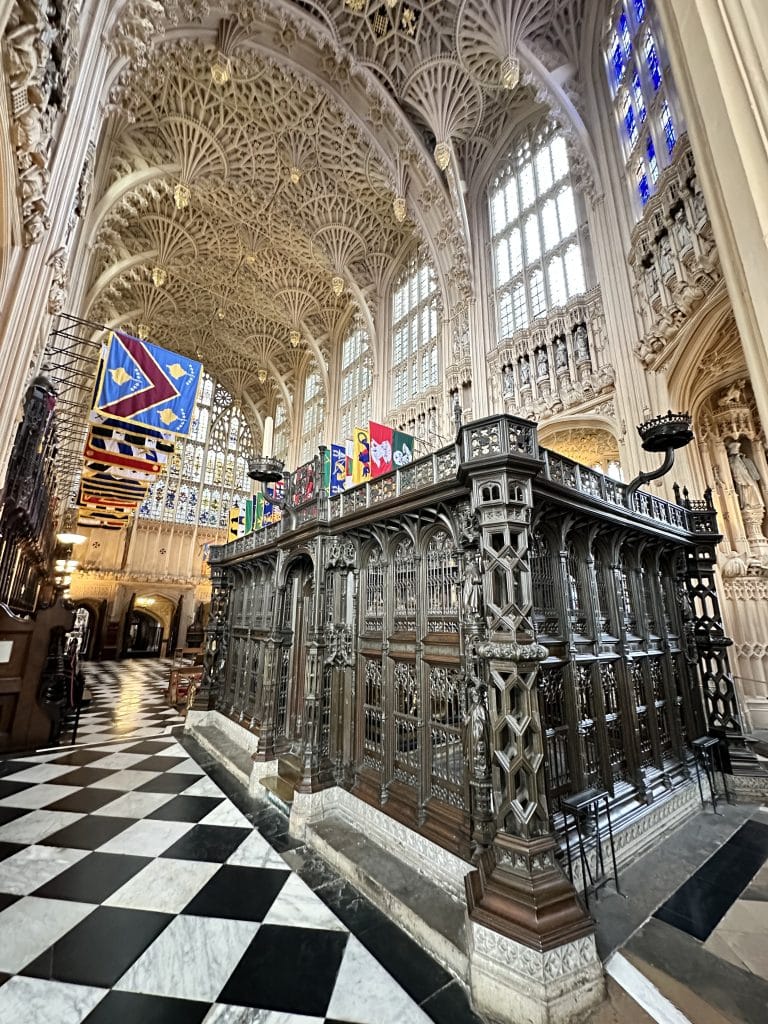
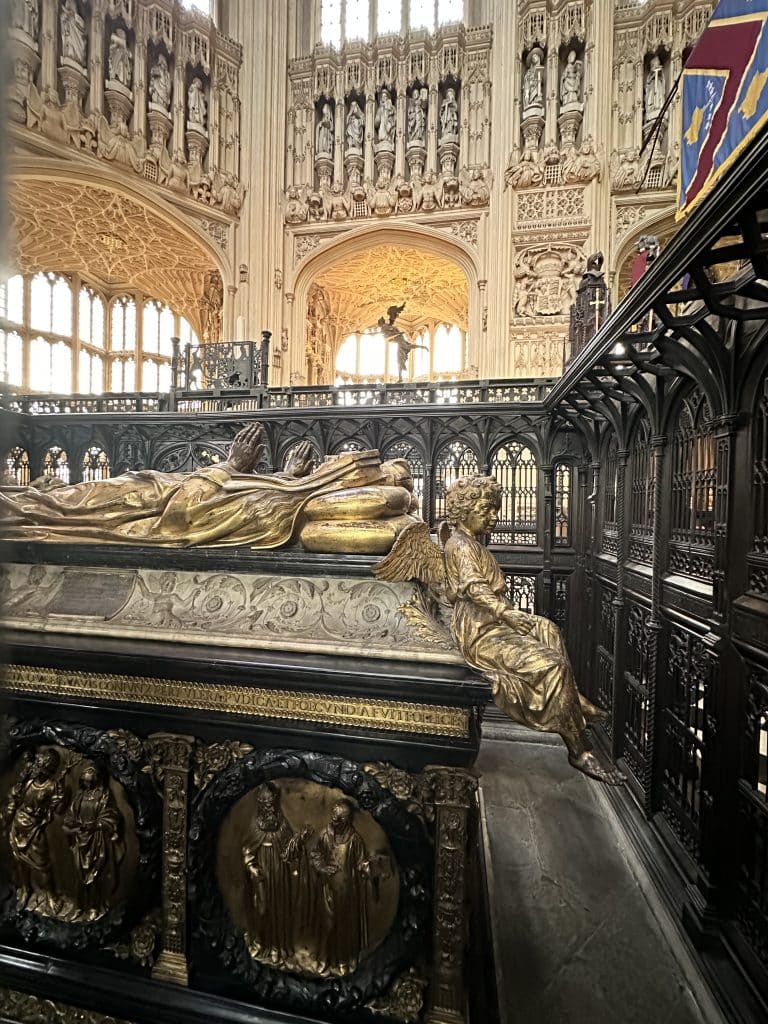
The entrance to the vault underneath the tomb lies on its right-hand side as you stand facing the east end. It is hidden underneath the pavement. However, the discovery of a flight of steps leading down to the tomb was made during the reign of Queen Victoria, when the Dean was searching for the lost body of James I of England and VI of Scotland. If you want to read more about this riveting adventure, click here.
Visitor Information:
Westminster Abbey is one of THE most popular tourist destinations in London. For any Tudor time traveller, it is right up there as a ‘must-see’ for first-time visitors, alongside, The Tower of London and Hampton Court Palace. Well over 3000 people are officially buried or commemorated in the abbey. Still, for Tudor aficionados everywhere, the most potent draw will be the Lady Chapel, built on the orders of the first Tudor monarch, Henry VII, as a magnificent mausoleum to the Tudor dynasty.
The chapel is one of the most awe-inspiring buildings in England, with its fabulous fan-vaulted ceiling stealing the show. Although you will see similar in St George’s Chapel, Windsor, and indeed on a much smaller scale in other buildings dotted around the country, you will enjoy no finer example than here at Westminster Abbey.
Within this Lady Chapel, you will find the tombs and effigies of Henry VII and Elizabeth of York, Margaret Beaufort, Mary, Queen of Scots, and commemorative plaques to Edward VI and Mary I. You cannot miss the tombs of Henry and Elizabeth right in the centre of the chapel, the most magnificent of all Tudor tombs
Other Nearby Tudor Places:
- Westminster Abbey: The Jubilee Galleries and the ‘Hidden Highlights’ Tours: Tickets are bought separately from the main admission ticket. I strongly urge you to try and book both. The Hidden Highlights Tours are particularly popular, and you may find it easier to book out of season (January and February)
- The Jewel House: )0.2 miles) Aside from Westminster Hall the only surviving part of the Old Palace of Westminster.
- Westminster Hall: (0.2 miles) The site of state trails of significant Tudor characters such as Sir Thomas More, Sir Henry Norris, William Brereton, Mark Smeaton and Sir Francis Weston. Also, the traditional location for coronation banquets, including that of Anne Boleyn. Entry is usually outside of Parliamentary sessions, or if you are a UK citizen, you can approach your member of Parliament to request they host a visit. Tickets should be booked in advance.
- The National Portrait Gallery: (0.8 miles) Travel up Whitehall (previously known as King Street), passing the site of the palace of Westminster and the Holbein Gate (both now entirely lost above ground) to reach Trafalgar Square and the National Portrait Gallery. Enjoy seeing some of the most incredible artwork of the Tudor age! The gallery reopens in June 2023 after an extended period of closure for refurbishment.
- The Garden Museum, Lambeth: (0.6 miles) The site of the burial of Elizabeth Boleyn, mother to Anne. The old church, used by the Howard family, whose house, ‘Howard House,’ was once sited directly across the road from the church, is now a garden museum. Have coffee in the cafe and see the broken stone ledger of Elizabeth’s tomb.

